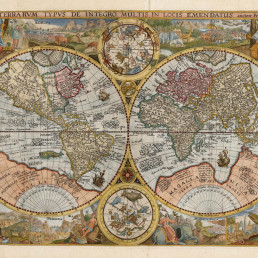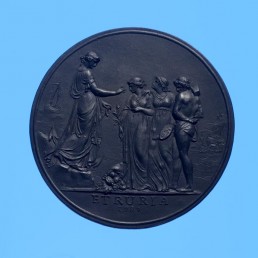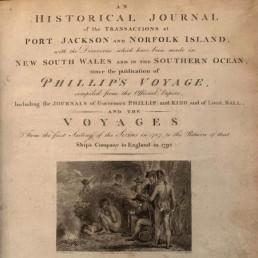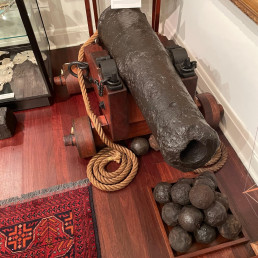
Name/TitleProclamation Coin. 1787 George III Silver Shilling S# 3743
About this objectAt the time the 1787 shilling appeared in circulation, King George III had taken on the appearance of an old man, in real life as well as in the portrait which appeared on these coins, as he was increasingly beset by illness.
Early colonial New South Wales produced very little in the way of manufactured goods, with the vast majority of goods brought in by ship. With traders often leaving once payment was secured, the colony faced constant shortages in circulating coinage. In an effort to combat this and retain coinage, Governor King issued a proclamation in 1800 whereby fixing the values of certain circulating coinage. This was known as the 'Proclamation' and it was done in an effort to stop currency being removed by traders.
The proclamation deemed that certain circulating coinage would have a value above the actual intrinsic or circulating value of the coin itself, with the rationale being that a coin with a higher accepted value was more likely to stay within the colony than to be removed by traders. It was also believed that this would encourage spending in the colony because of its extra buying power.
Values shown are in pounds, shillings, and pence:
Great Britain: Gold Guinea, 1£ 2s
Portugal: Gold Johanna, 4£
Portugal: Gold Half Johanna, 2£
India: Gold Mohur, 1£ 17s
India: Gold Pagoda, 8s
India: Silver Rupee, 2s 6d
Spain: Silver 8 Reales, 5s
Netherlands: Gold Ducat, 9s 6d
Netherlands: Silver Guilder (Gulden), 2s
Great Britain: Silver Shilling, 1s 1d
Great Britain: Cartwheel Copper Penny, 2d
Date Made1787
Period18th century
Medium and MaterialsSilver
Object TypeCurrency and Shares
Object numberSF000994
Copyright Licence![]() Attribution - Non-commercial - No Derivatives (cc)
Attribution - Non-commercial - No Derivatives (cc)
Explore by category
Maps and Charts
Date range: 1541-1836
Ship Models
Date range: 1629-1890
Maritime Paintings
Date range: 1793-1849
Manuscripts and Ephemera
Date range: 1768-c1850
Medallions & Convict Tokens
Date range: 1619-1880
Landscapes
Date range: 1768-c1850
Books
Date range: 1694-c1850
Currency and Shares
Date range: 1624-1823
Printed Material
Date range: 1541-1836
Maritime Archaeology
Date range: 1629-1854
Curator's corner
New acquisitions, staff favourites and curios
The mug is decorated with an underglaze and a blue transfer print. On the body, it is titled ‘Emigrants to Australia’. This type of body and glaze was discontinued by 1840. Comparison of the handle shape and the profile of the foot, point to the attribution of manufacture by the Davenport Factory.
Delta was a ship-rigged vessel with two decks and three masts. It was built in Dordrecht, Netherlands in 1839 at the shipyard of Jan Schouten and registered in the same port. Its hull was constructed of oak and sheathed in ‘yellow metal’. Delta was owned by H. van der Sande at the time of its loss and was engaged as a cargo trader.
The Delta carried 29 crew and passengers, while sailing from Melbourne to Batavia in ballast when wrecked at Kenn Reefs on 30 May 1854 whilst under the command of Captain J.G. Kunst. This vessel loss supports the pattern of shipwrecks located on a well-travelled shipping route that was poorly charted until the mid-nineteenth century. The crew of the Delta could see four other shipwrecks at Kenn Reefs at the time of their vessel’s loss.
Important image of a ship associated with Matthew Flinders, that would shortly become one of the most famous early shipwrecks in eastern Australian waters. This is a fine ship’s portrait, by one of the great exponents of the art


















